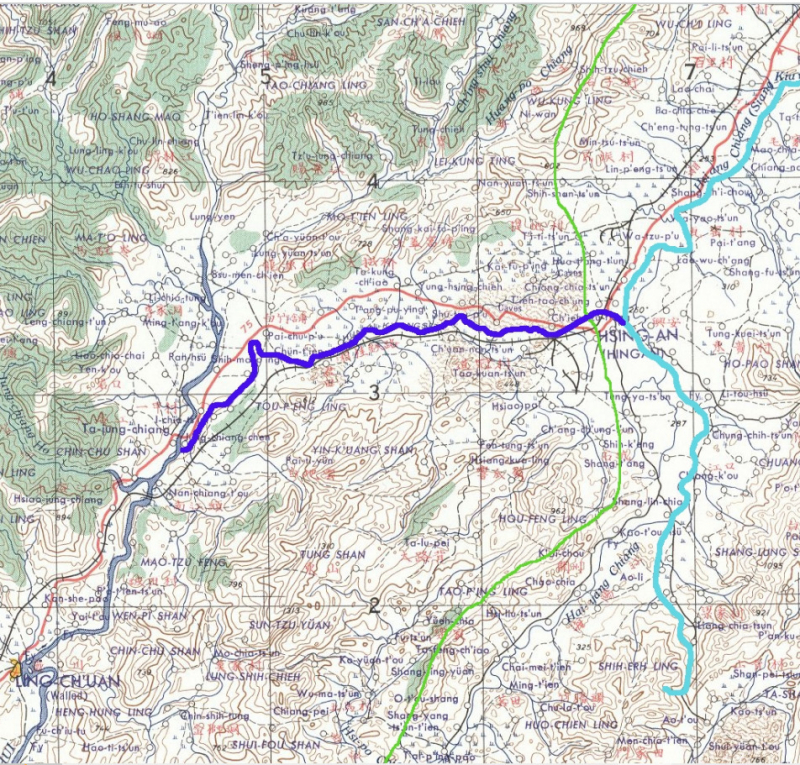Construction of the Lingqu Canal
The Lingqu canal, which is sometimes referred to as the Dou Canal or the Xing'an Canal, is situated in Xing'an County in the Guangxi Zhuang Autonomous Region. It is a historic canal that unites the Xiang and Li rivers, and the Yangtze and Pearl river basins, and connects Central China with the Lingnan area. The 36.4 km long route passes through the cities of Xi'an, Yan'guan, Rongjiang, and Xiang'li. Its main projects include Canal Head Complex, the South Canal, and the North Canal.
Shi Lu was tasked by Emperor Qin Shi Huang with constructing a canal for the transportation of grain following the unification of China by the Qin Empire. The project, which is now known as the Lingqu Canal, was finished in 214 B.C. Until the building of the Yuehan Railway and Xianggui Railway in modern times, the Canal served as the main waterway for transportation between Lingnan (today's Guangdong and Guangxi) and Central China.
The main design principle of the Canal is to use weirs to raise the level of the Xiang River. Additionally, one stream is diverted through a new canal (today's North Canal), which meanders into the Xiang River, while another stream is directed through the South Canal into an upper branch of the Li River. The Yangtze and Pearl River river systems may communicate with one another thanks to the connection of the two rivers. Overflow dams, training dikes, and side overflow dams are used near the canal head to redirect water and manage to flood. Additionally, the Canal was developed by combining excavation and dam building, easing the slope's steepness with bends, controlling water flow with old locks and weirs, and using an existing natural waterway (the former Xiang River's route) or digging new canals to discharge floodwaters. This is a large-scale project that makes use of all the available natural resources and several hydraulic facilities. It displays the unique design and technical prowess of early Chinese hydraulic projects.
The Lingqu canal was also constructed as an irrigation project, transforming Xing'an into a developed agricultural area. After the People's Republic of China was established, the Canal had a comprehensive renovation and is now in excellent condition considering its age. Related canals and hydraulic infrastructure are still there despite the fact that it is no longer used for navigation and their irrigation role has been diminished. The Lingqu canal serves irrigation, flood control, water supply, and tourism nowadays in addition to being a significant piece of cultural history.
In the history of canals around the world, the Lingqu canal's technological system is extremely important. It is both proof of the exceptional canal technology of prehistoric China and a superb illustration of the first canals that exhibit Asian hydraulic and navigational expertise. Its design of a canal that spans a mountain range, a curving navigation path with locks, and precise control over water flow by extensive hydraulic systems are all creative and noteworthy accomplishments. It was built in 214 B.C. and played a crucial role in the Baiyue ethnic group's and the Lingnan region's conquest by the Qin Empire, as well as in maintaining peace in the southern area of a unified multicultural nation. The Lingqu canal's distinctive landform, winding waterways, and rural setting, on the other hand, are representative of old Chinese canal landscapes and have considerable artistic value.
In short, the construction of the Lingqu canal is considered a great Achievement of the Qin Dynasty:
- Lingqu canal is situated in Xing'an County in the Guangxi Zhuang Autonomous Region with a 36.4 km long route.
- It was designed by Qin Shi Lu and finished in 214 B.C.
- The main design principle of the Canal is to use weirs to raise the level of the Xiang River by combining excavation and dam building, easing the slope's steepness with bends, controlling water flow with old locks and weirs, and digging new canals to discharge floodwaters.
- It was also constructed as an irrigation project that transformed Xing'an into a developed agricultural area.
- The construction of this canal has brought great benefits to China to this day.









